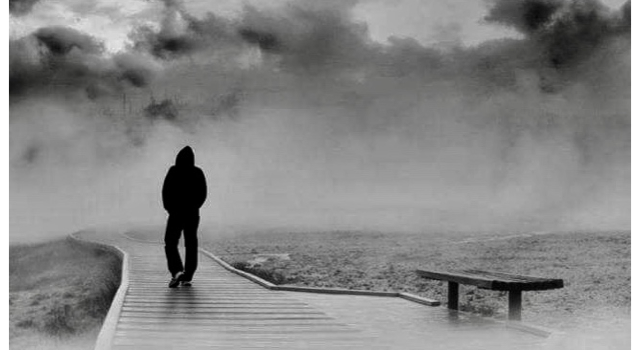The BBC has been accused by more than 100 of its staff of giving Israel…

Murder In Canterbury Cathedral.
On the evening of December 29, 1170, four heavily armed knights forced their way into Canterbury Cathedral.
They had already turned up at the Cathedral once that day, unarmed, to demand the surrender of Archbishop Thomas Becket, whom they had accused of treason.
When Becket refused to accompany them, they went back outside for their weapons and returned determined on murder.
Mindful of the sanctity of their surroundings, the knights first tried to drag him outside, but he clung to a pillar and could not be budged.
Drawing their swords, they then hacked and stabbed him to death.
It was one of the most infamous murders in English history.
Chairman Escapes While 1,500 Drown.
Little is certain of what happened to Edward J Smith, captain of the Titanic, except that he went down with the ship.
It is clear he was ultimately responsible for the failed command structure and never issued a general “abandon ship” order.
He had no plan for an orderly evacuation and there was neither a public address system nor a drill, even for the inadequate number of life boats that were on board.
Joseph Bruce Ismay, chairman of the White Star Line, was on board at the time and was criticised in the press for escaping in a lifeboat while 1,500 people drowned.
His career was ruined and when he died on October 17, 1937, he was buried at Putney Vale cemetery, next to Wimbledon Common.
Eight Years Before Titanic Sank.
July 5, 1904.
Out of 765 crew and passengers on the Norge, a US-bound passenger ship from Copenhagen, just 128 survived when it struck a reef 180 miles west of Scotland.
“Women and children were drowned literally by the hundred,” said the report, which told of pandemonium on board, lack of lifeboats and a mad rush to escape as the vessel sank in just 12 minutes.
Survivors said those on lifeboats had to beat off ‘drowning wretches’ clinging to the side and capsizing the vessels.
But among the tragedy there were stories of heroism.
A 17-year-old boy sacrificed his own life to save his sister after realising there was no space for them both.
And an officer of the ship, finding the boat he was in overladen with women and children, leapt overboard to give them a better chance of escaping.
Flood Killed 1,800 People In Holland.
In 1953, a major flood killed around 1,800 people in Holland and authorities realised a sea defence had to be built.
The answer was to block certain estuaries leading to Antwerp and Rotterdam.
The basic premise was very simple – minimise the exposure of the dykes to the sea.
But the execution was amazing, and the scale of it enormous – the whole coastline had to change.
In the Odense area, the sea defence is designed for a one-in-10,000 year surge.
In England, the only comparable construction, The Thames Barrier, is designed for a one-in-1,000 year surge.
With sea levels expected to keep rising, work to broaden coastal dunes and strengthen sea and river dykes is estimated to continue for another 100 years.
Copernicus Was Fearful Of The Catholic Church.
Polish astronomer Copernicus has never been fully appreciated for one of the most revolutionary ideas in the history of science.
Namely, that Earth goes around the Sun, not vice-versa.
Copernicus risked his life challenging the power of the Roman Catholic Church in the 16th Century to complete his work.
By doing so he turned our home from a static rock into a planet spinning at 700mph and flying through space at 7,000mph.
A few Ancient Greek philosophers had posited the notion of everything revolving around the Sun, but the view that the Earth was at the centre of the universe had been dominant ever since Ptolemy had published the Syntaxis Mathematica around 150AD.
Indeed, this manuscript was so much beyond reproach that it later became known by its Arabic name, Almagest, which literally means ‘The Greatest’.
Copernicus was not only going against the scientific consensus, he was also confronting two other conservative forces.
The first of these is common sense.
It seems obvious we are not moving, that it is the Sun that crosses the sky.
In any case, Earth cannot be flying through space, or we would suffer a constant head wind.
In short, common sense suggests our planet is the hub of the universe.
But as Einstein pointed out: “Common sense is the collection of prejudices acquired by age 18”.
The second conservative force was the Catholic Church.
Copernicus was so fearful of the Pope’s reaction to his revolutionary model of the universe that for decades he refused to publish it in full.
Was The Original Mecca Close To The Shores Of Lake Galilee?
Some scholars have suggested that Muhammad’s own tribe was part of a group lured from southern Arabia to settle on the eastern border of Byzantine Palestine.
The Christians’ Holy Land rather than the holy places of Islamist Hijaz might therefore be the setting for the Prophet’s early career and his first revelations.
The evidence is slight and far from conclusive.
It places Muhammad closer to the heart of the religious debates and political struggles of the age, and explains why, between the lines, the Koran is so shot through with such concerns.
Was the original ‘Mecca’ in fact close to the shores of Lake Galilee in a landscape haunted by the figures of the Old and New Testaments?
Was the holy ‘House’ that Muhammad commanded the faithful to visit, not the shrine now visited in Arabia, but the ancient sanctuary at Mamre, long revered by Jews and Christians alike as the place where Abraham listened to God?
It is another reminder that what divides the three great monotheisms of the world is how much they have in common.
Did God Once Have A Wife?
You might know him as Yahweh, Allah, Jehovah or God.
But on this fact, Jews, Muslims and Christians, the people of the great Abrahamic religions, are agreed.
There is only one of Him.
He is a solitary figure, a single, universal creator, not one God among many.
Or so we like to believe.
Archaeological evidence including inscriptions, figurines and ancient texts as well as details in the Bible, indicate not just that he was one of several worshipped in ancient Israel, but that he was also coupled with a goddess.
She was worshipped alongside him in his temple in Jerusalem.
Yahweh, the God we have come to know, had to see off a number of competitors to achieve his position as the one and only God of the ancient Israelites.
The biblical texts name many of them. El, Baal, Molek, Asherah.
Despite Yahweh’s assertion in the Ten Commandments that ‘you shall have no other gods before me’, it appears these gods were worshipped alongside him, and the Bible acknowledges this.
Far more significant is the Bible’s admission that the goddess Asherah was worshipped in Yahweh’s temple in Jerusalem.
In the Book of Kings, we’re told that a statue of Asherah was housed in the temple and that female temple personnel wove ritual textiles for her.
In fact, although the Bible condemns all of these practices, the biblical texts suggest that goddess worship was a thriving feature of high-status religion in Jerusalem.
What, then, was her relationship to Yahweh?
Yahweh is often called ‘El’ in the Bible and he performs many of the same roles.
Despite numerous references to Asherah worship in the Bible, there wasn’t enough evidence to link her explicitly with the high god Yahweh.
Until, that is, the discovery of a remarkable ceramic inscription in the Sinai Desert.
Dating to about the 8th Century BC, the inscription is a petition for a blessing.
Crucially, the inscription asks for a blessing from ‘Yahweh and his Asherah’.
Here was evidence that presented Yahweh and Asherah as a divine pair.
Similar inscriptions have since been found, all of which help to strengthen the case that the God of the Bible once had a wife.



This Post Has 0 Comments